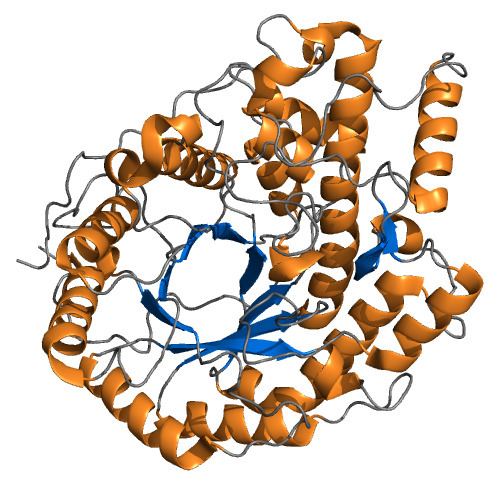EC number 3.2.1.2 IntEnz IntEnz view ExPASy NiceZyme view | CAS number 9000-91-3 BRENDA BRENDA entry KEGG KEGG entry | |
 | ||
Beta-amylase (EC 3.2.1.2, saccharogen amylase, glycogenase, beta amylase, 1,4-alpha-D-glucan maltohydrolase) is an enzyme with systematic name 4-alpha-D-glucan maltohydrolase. This enzyme catalyses the following chemical reaction
This enzyme acts on starch, glycogen and related polysaccharides and oligosaccharides producing beta-maltose by an inversion. Alpha-amylase is found in bacteria, fungi, and plants and bacteria and cereal sources are the most heat stable. Working from the non-reducing end, β-amylase catalyzes the hydrolysis of the second α-1,4 glycosidic bond, cleaving off two glucose units (maltose) at a time. During the ripening of fruit, β-amylase breaks starch into maltose, resulting in the sweet flavor of ripe fruit.
β-amylase is present in an inactive form prior to seed germination. Many microbes also produce amylase to degrade extracellular starches. Animal tissues do not contain β-amylase, although it may be present in microorganisms contained within the digestive tract. The optimum pH for β-amylase is 4.0–5.0
